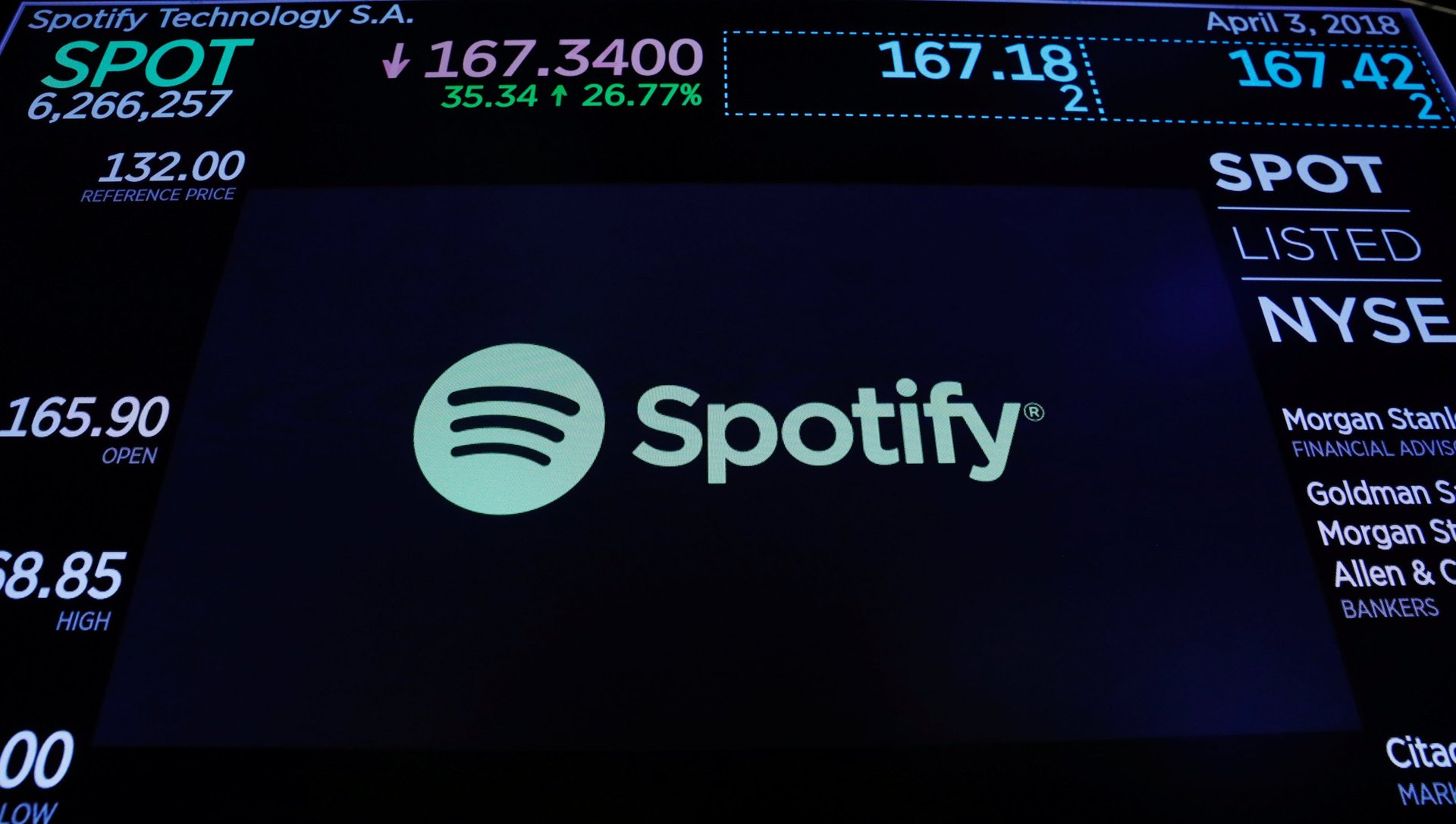Investors see trouble through Spotify’s profitability blip
Spotify announced its third quarter earnings today (Nov. 1) but despite growth in its paid subscribers and users, along with its first-ever quarterly profit, investors still weren’t thrilled.


Spotify announced its third quarter earnings today (Nov. 1) but despite growth in its paid subscribers and users, along with its first-ever quarterly profit, investors still weren’t thrilled.
As the company predicted last quarter, the music streaming service now has 87 million paid subscribers, which is up 4 million from July and an increase of 40% compared to the same period last year. There are now also 191 million people who use Spotify each month, a jump of28% over the same time last year. Much of this growth, the report said, was fueled by emerging markets like Latin America.
For the first time in its history, Spotify has turned a profit. The Stockholm-based company reported a net income of €43 million (roughly$49 million), but it mainly has Chinese technology giant Tencent to thank for that. Spotify and Tencent announced a share swap in December 2017 with the two companies agreeing to invest in each other’s music-streaming businesses, but after Tencent’s music division registered to go public earlier this year, Spotify had to adjust the value of its stock. This led to a $125 million tax benefit, which resulted in Spotify’s first-ever quarterly profit, but this isn’t likely to last if the value of Spotify’s investment shifts. The company said the windfall was a “one-time, nonrecurring event,” and expects to return to a loss in the coming quarters.
But this glimmer of a profit, even coupled with strong subscriber and user growth, wasn’t enough for investors. This is mainly because Spotify said it would focus on revenue growth rather than profit margins for the foreseeable future. “Unfortunately profitability is no good (and) that’s too bad,” Tomas Otterbeck, an analyst with research firm Redeye in Stockholm, told Reuters.
Spotify generated €1.35 billion ($1.54 billion) in revenue for the quarter, which falls on the higher end of the guidance it gave last quarter, but the company’s forecast for the fourth quarter fell short of expectations. Spotify said it predicts its revenue for the fourth quarter to be between €1.35 billion ($1.54 billion) to €1.55 ($1.77 billion), the midpoint of which is lower than analyst’s estimates of €1.49 billion ($1.7 billion), according to Bloomberg. As a result, shares slumped in early trading and stock prices fell as much as 10% to $134.14 per share from $136.80 when the market opened, following the third quarter report.
Another potential issue for investors is that Spotify’s average revenue per user continues to fall, mainly because of better growth in its family plan business (split among up to six people) and discounts it offers students. And it’s still unclear whether Spotify’s investment into other forms of audio entertainment, like podcasts, or its Spotify for Artists platform, which lets independent artists upload music directly to the service, will take off. As Bloomberg points out, Spotify can’t afford to keep on losing money in exchange for rights to songs, because it doesn’t have much else to fall back on for profit—unlike other tech giants like Apple or Google, which have music-streaming services as one of many services they offer, music is Spotify’s only real business. Combined with the worldwide selloff of tech shares in the last few months, Spotify’s stock price has lost everything it gained since its closing price on its first day of trading in April.
Spotify said it plans to accelerate investments into research and new content, which would reduce its operating margins “for the foreseeable future.”